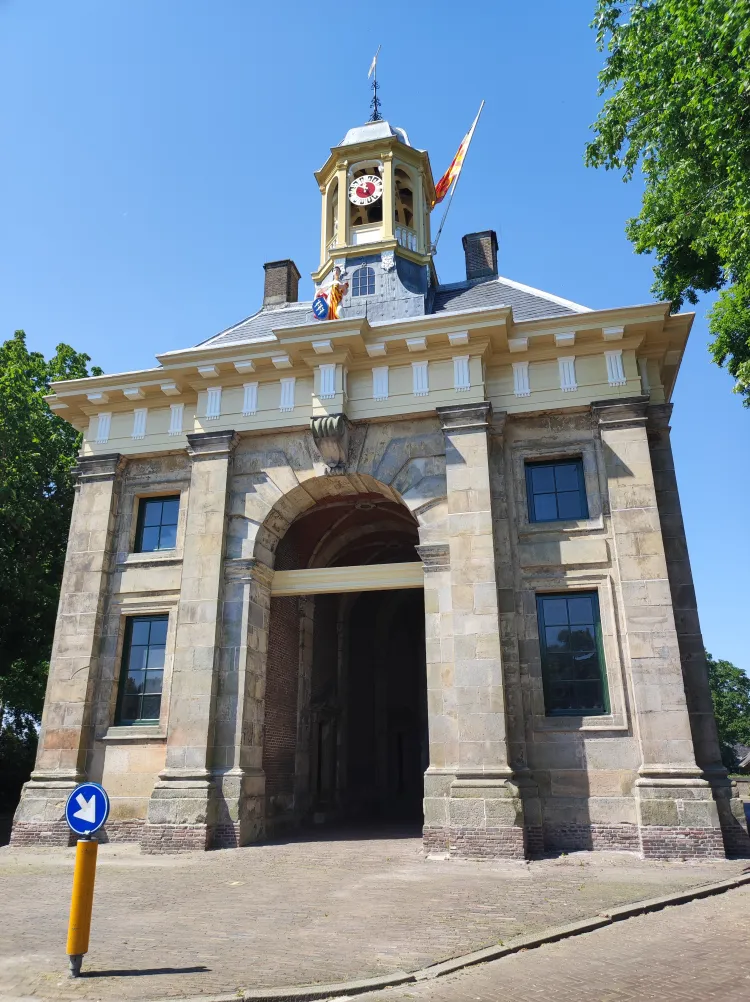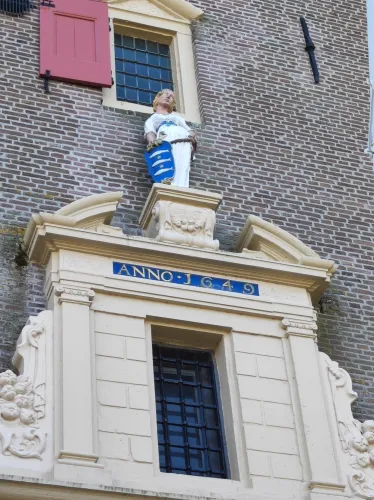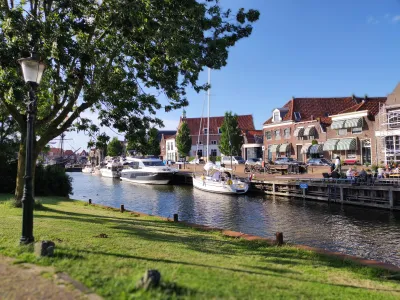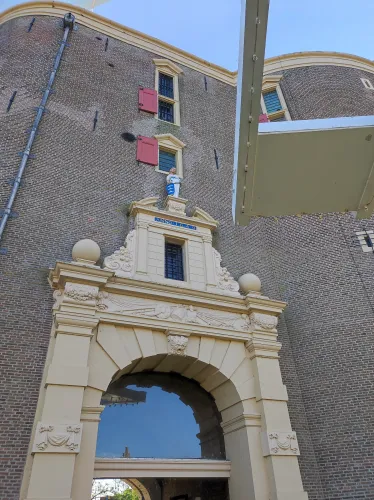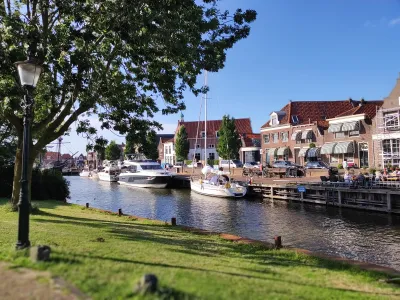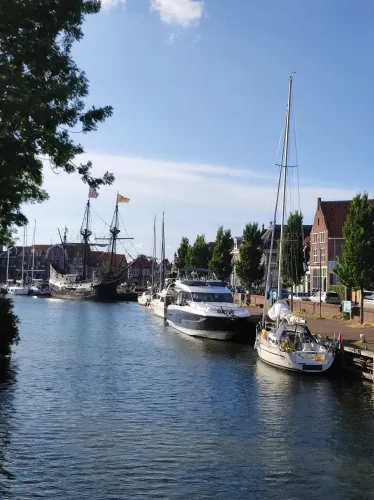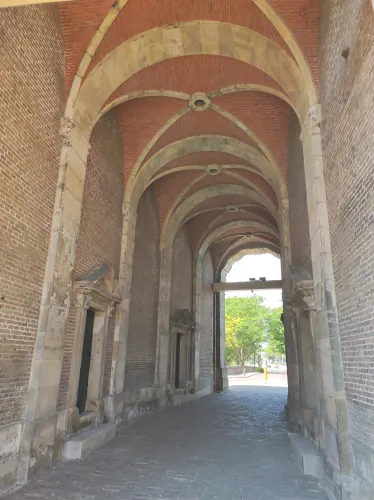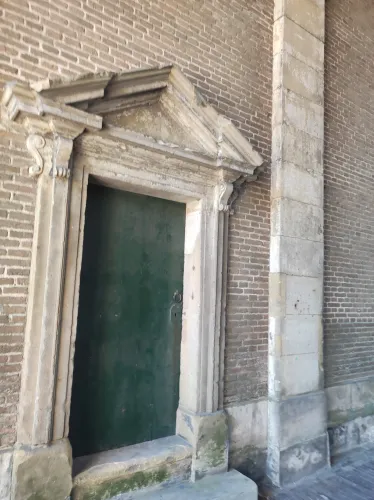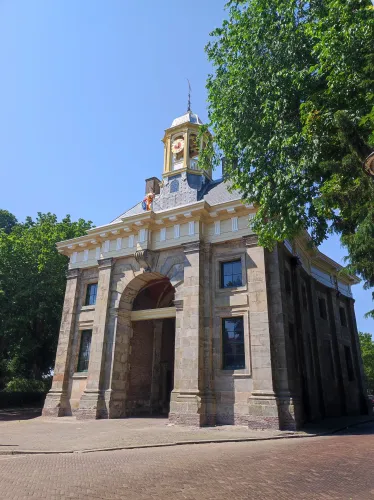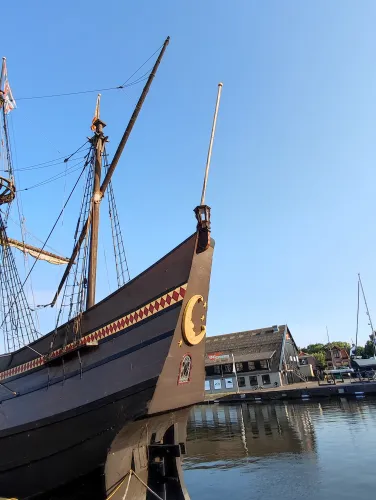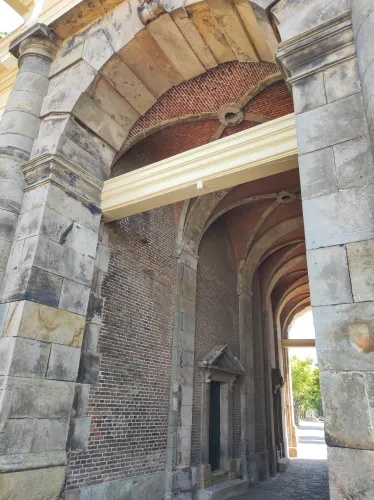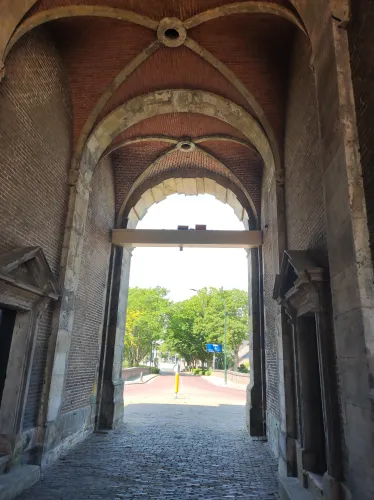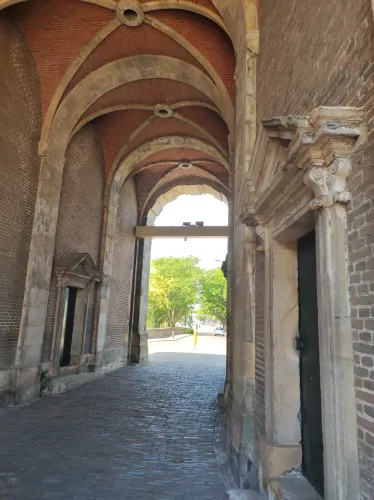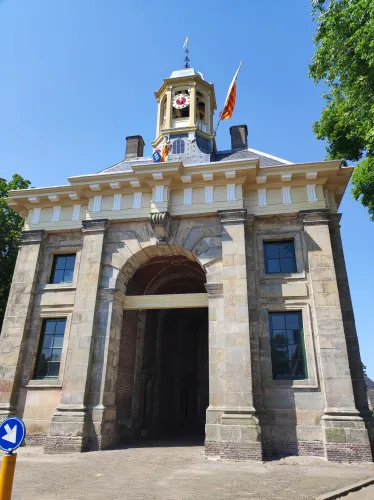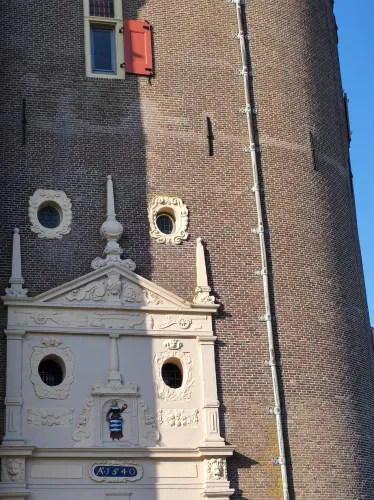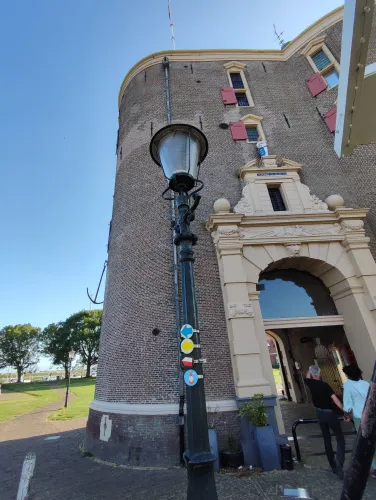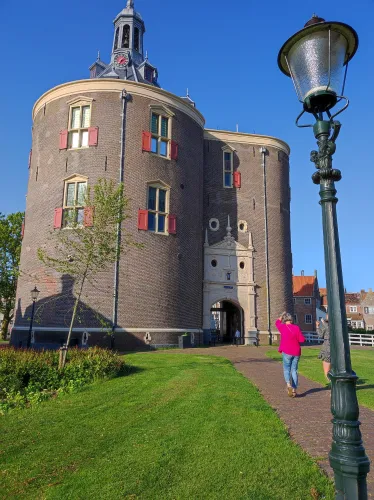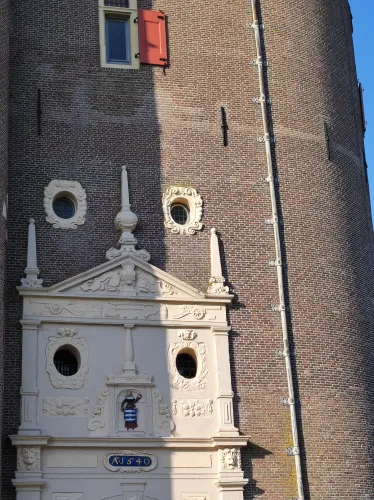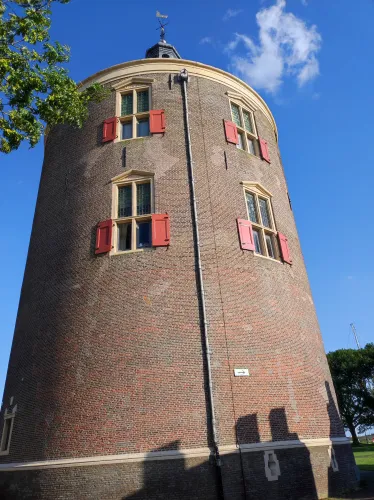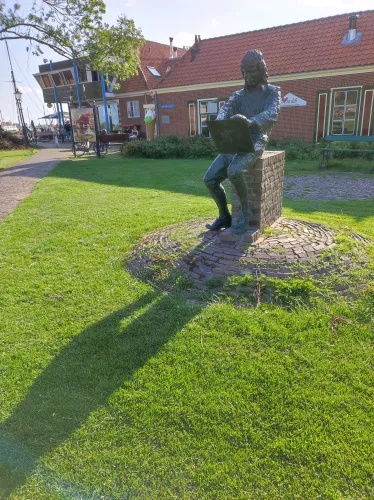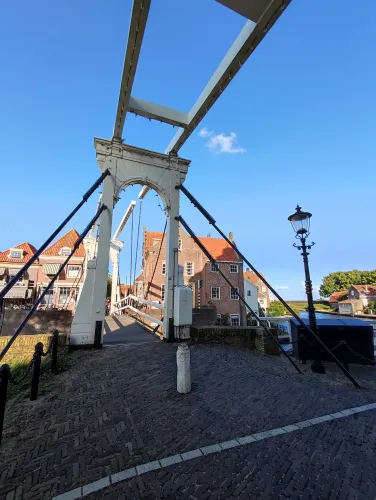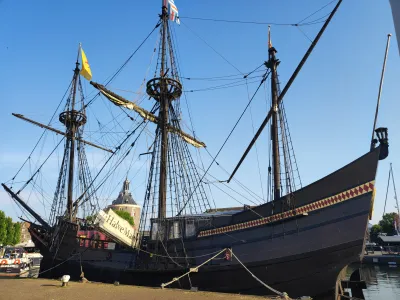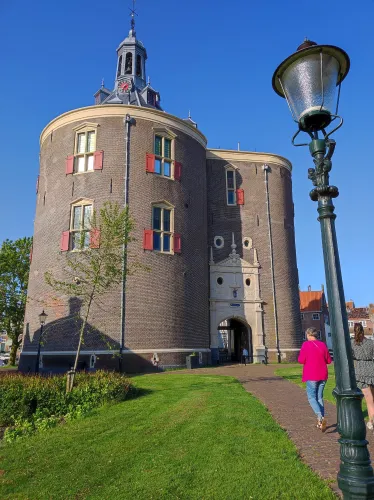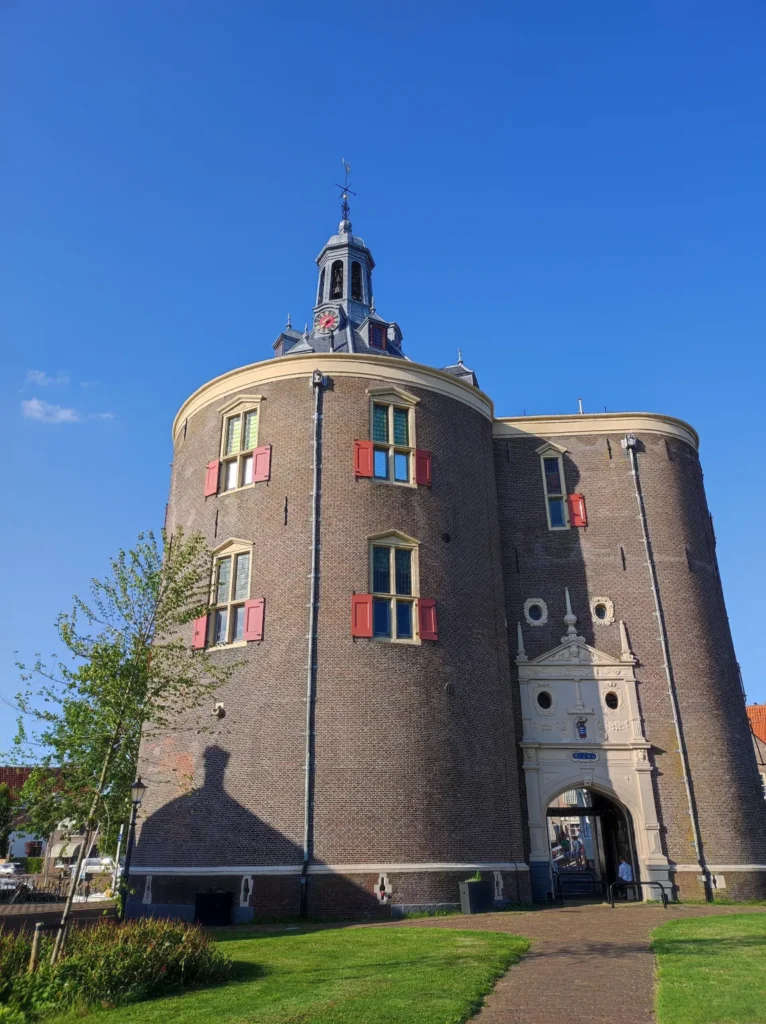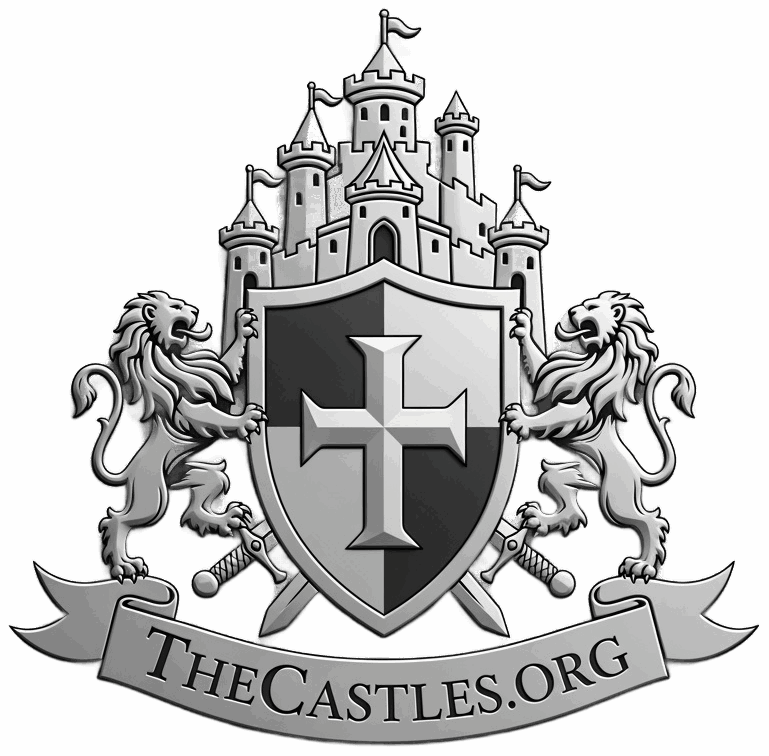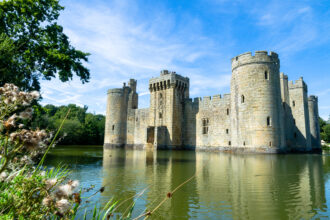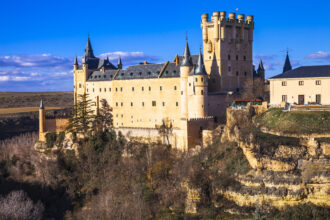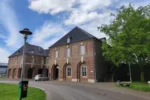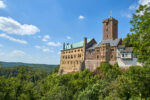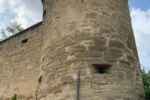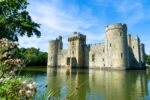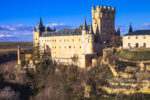Enkhuizen is one of the most beautiful harbor towns and also a historic fortified town. This legendary coastal town in the Dutch province of North Holland is located on one side of the Markermeer and IJsselmeer lakes and is surrounded on the other side by the typical Dutch polder landscape. Enkhuizen is one of the 100 most beautiful towns in the Netherlands and looks back on a rich history. Enkhuizen was once a small fishing village that was granted town rights by Count Willem V in 1356. In the 17th century, the city gained wealth through maritime trade and became the most important center for herring fishing. At that time, Enkhuizen had the largest herring fleet in the Netherlands, which was home to both the VOC, the Dutch East India Company, and the Dutch West India Company. Today, 366 national monuments within the old city walls bear witness to this golden age. The most famous building and one of the city’s landmarks is the Drommedaris, also known as the Ketenpoort. This city gate was part of the city wall and was built in 1540. The fortified gate with its defense tower protected the entrance to the harbor. From here, the city’s ports and the former Zuiderzee could be easily monitored. The name Drommedaris is derived from the Latin word Dromedarius, which means camel. With a little imagination, the brick structure resembles a one-humped camel, a dromedary. At that time, the building was also used as a prison and storage room. It is now home to the De Drom cultural center, which hosts concerts, cabaret performances, and other events. Another city gate, which is the only remaining land gate of the Enkhuizen fortifications, is the 17th-century Cow Gate, also known as Koepoort. This gate used to be the main western entrance to Enkhuizen and has a slight bend in the gate opening. This was to make it impossible for enemies to shoot through the gate. In addition to its defensive purpose, the gate also had an economic function. Merchants were only allowed to pass through the gate if they had paid customs duty on their goods. Since 1930, an access and exit road has been built around the archway, as the increasing car traffic had severely damaged the structure of the gate. In 1987, the statue “Stedemaagd” by Dutch sculptor Han Sterk was erected on the city side of the gate, which is a real eye-catcher.
